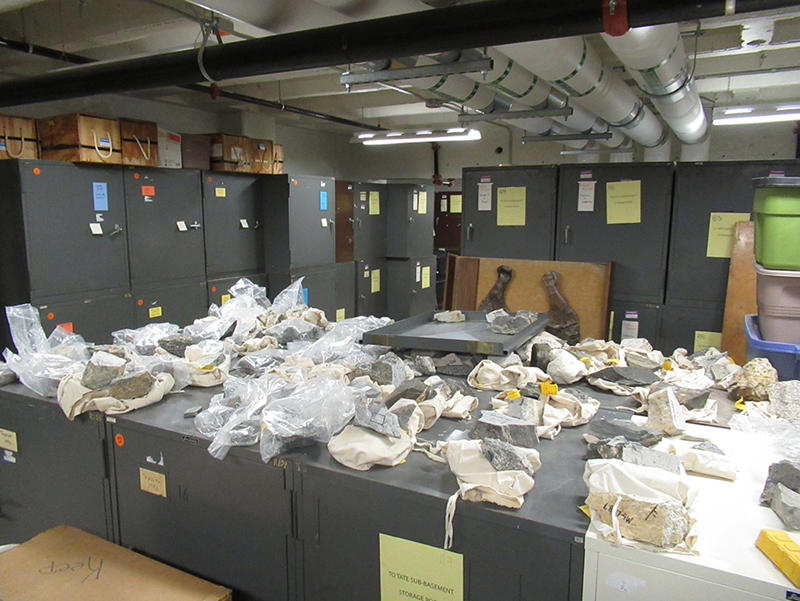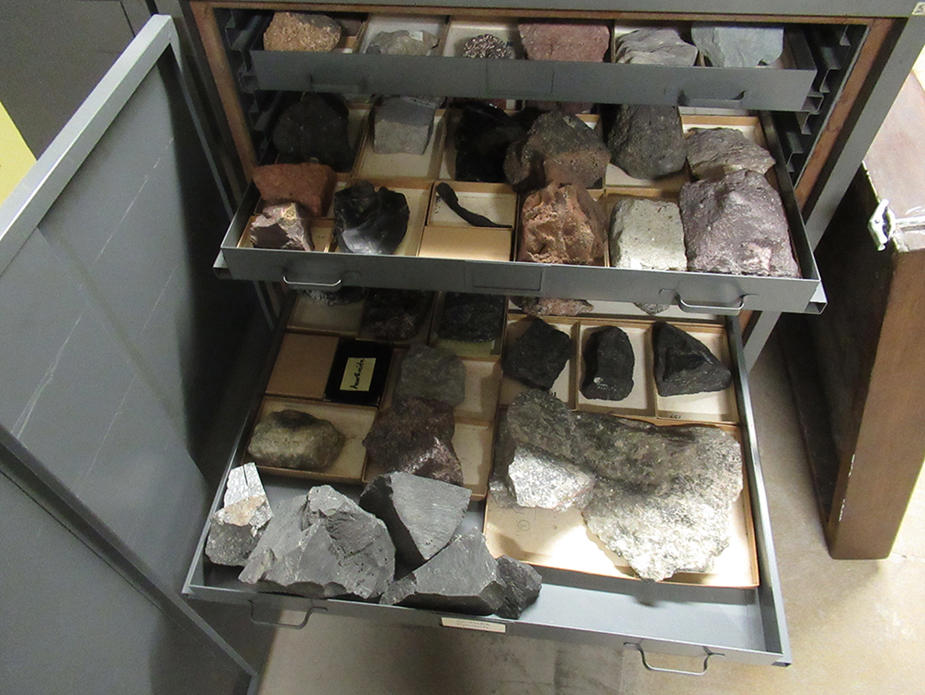
A Summary of Past and Present Collections of the Earth and Environmental Sciences Department
When imagining geology collections, many people envision museum-quality specimens of rocks, minerals, and fossils ranged behind glass. Those with more museum or research experience often imagine countless samples lying in acid-free brown cardboard boxes in metal cabinets. However, folks encountering the Earth and Environmental Sciences department collections unfortunately realize they need to add bins, bags, and unsorted piles of uncatalogued Earth materials to their mental image. While modern geology collections extend beyond rocks, minerals, and fossils to include rock, sediment, and ice cores, as well as pollen and soil samples, those materials still fall comfortably within common concepts of geology collections. Unfortunately, our department’s past collections included other objects as well.
Early in our history, the University’s General Museum was an integral part of our department. Originally viewed as primarily a museum of natural history, it eventually grew to include two general collections: geology and mineralogy, and biology and botany. The fate of those two collections differed greatly. The biology and botany collection continued to evolve into the current Bell Museum, but the geology collection instead fell victim to our department’s growing need for space. As other demands led to a lack of financial support for curation, the majority of its specimens and displays were lost or discarded. However, besides natural history specimens, the General Museum held a suite of ‘archaeological’ materials that reflected the scope of the department’s early research and that subcollection included some materials our department should never have held.
Consider a sample of tattooed skin from a cadaver; native dress, loom, and cloth from the Vili along the Ogooué River in Gabon, Africa; two braids of hair from a native of the New Hebrides; pipes, pottery, stone hammers, spear points, and arrowheads; partial skeletal remains and funerary objects stolen from burial mounds across Minnesota; a braided lock of Dirt-in-the-Face’s hair; and a beam believed to have been part of the gallows used in the murder of 38 Dakota in Mankato, Minnesota in December of 1862. These items were once part of our department collections. Although none of these items remain in our collections, their past presence highlights the necessity of considering collections from the perspective of their original time. They also deserve an acknowledgment of past transgressions as well as a commitment to avoid such practices in the future.
Acknowledgements
Much of the information gathered for this collection history came from the University of Minnesota Archives. Credit is particularly due to Rebecca Toov who compiled all the references to the General Museum from the twenty-four Annual Reports of the Geological and Natural History Survey of Minnesota. However, any errors are the sole responsibility of the author.
